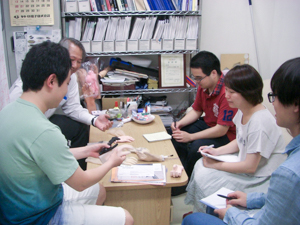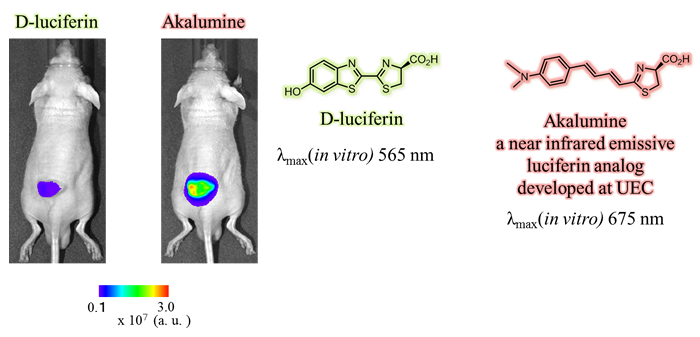March 2015 Issue
Topics
Brain Science Inspired Life Support Research Center, UEC
Brain Science Inspired Life Support Research Center was established in May 2013 as an interdisciplinary research institute with the mission of helping people to live peacefully in an aged society. "The BLSC was set up based on UEC's philosophy of 'comprehensive communication sciences', says Shigeru Tanaka, Specially Appointed Professor Office of Comprehensive Communication Sciences Initiatives. "Our Center has specialists from a wide range research areas including brain science, informatics, robotics, and optics. Research staff include Yoichi Miyawaki, a tenure track associate professor who is conducting experiments on sensory information processing of the brain using functional MRI and EEG measurement systems."
A major goal of the BLSC is to devise 'innovative technologies' to assist the elderly with cognitive and physical difficulties by facilitating students from a diverse range of backgrounds with the appropriate interdisciplinary skills for the challenges ahead.
Highlights of programs at the BLSC

The BLSC was established to nurturing experts capable of initiating interdisciplinary solutions to some daunting issues on health and welfare in an aged society. With this goal in mind, the 'hands on lecture course' is one of the flagship projects being pursued at the BLSC. "This course is aimed at nurturing human resources to tackle the issues of our superaged society to improve the quality of life," says Haruki Niwa, Specially Appointed Professor at the BLSC. "I am working with colleagues including another Specially Appointed Professor Yukio Yamada and Dr Soichiro Morishita on running this course for graduate school students. One of the most challenging experiments for students is solving of an inverse problem, in which students determine the position of a bioluminescent light source placed in a phantom, a model of animal body. The bioluminescent light is made by firefly luciferase and a rationally designed probes, which is my specialty."
The students learn about the functions of human organs such as brain, ears and muscles with lectures and experiments designed by UEC specialists in optics (optical probes, optical imaging technology, and multidimensional image analysis to elucidate the plasticity, self-recovery, and regeneration of function by the brain); in-vivo brain functions (measurement of the response of individual cells under external stimuli, brain imaging related to motor functions, and brain machine interface (BMI) to control and monitor the brain; measurements of motor functions of the brain to develop technology to control and rehabilitate brain functions. This 'hands on course' is financed by MEXT as part of the New Human Resource Development Programs Supporting Super aged Societies with Brain Science Inspired Life Support Innovation (2012-2017).
Further information
- Brain Science Inspired Life Support Research Center:
http://www.uec.ac.jp/eng/research/researchcenters/blsc.html - Shigeru Tanaka Lab: http://tanaka-lab.net/
- Yoichi Miyawaki Lab: http://www.cns.mi.uec.ac.jp/index.html



